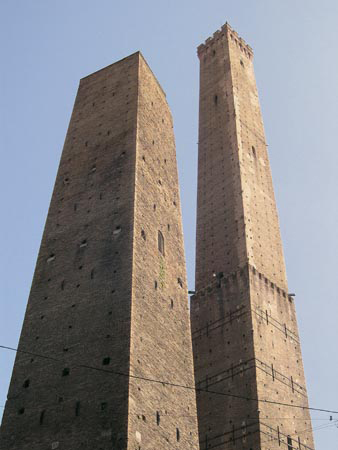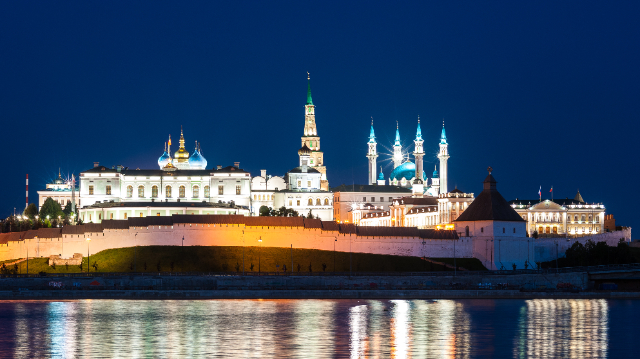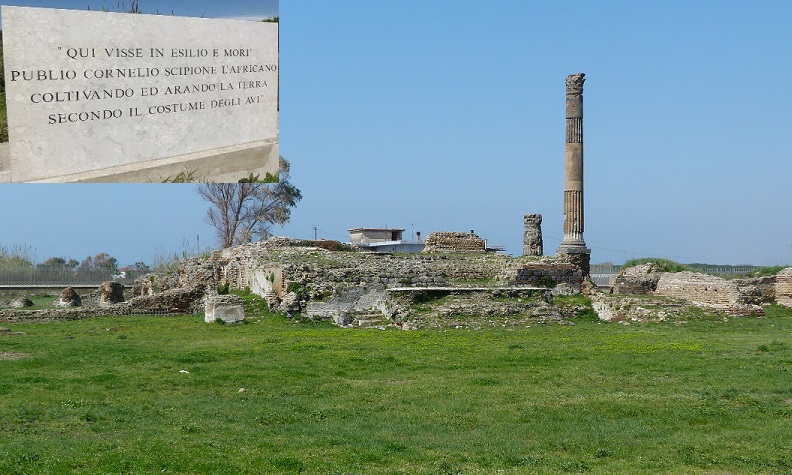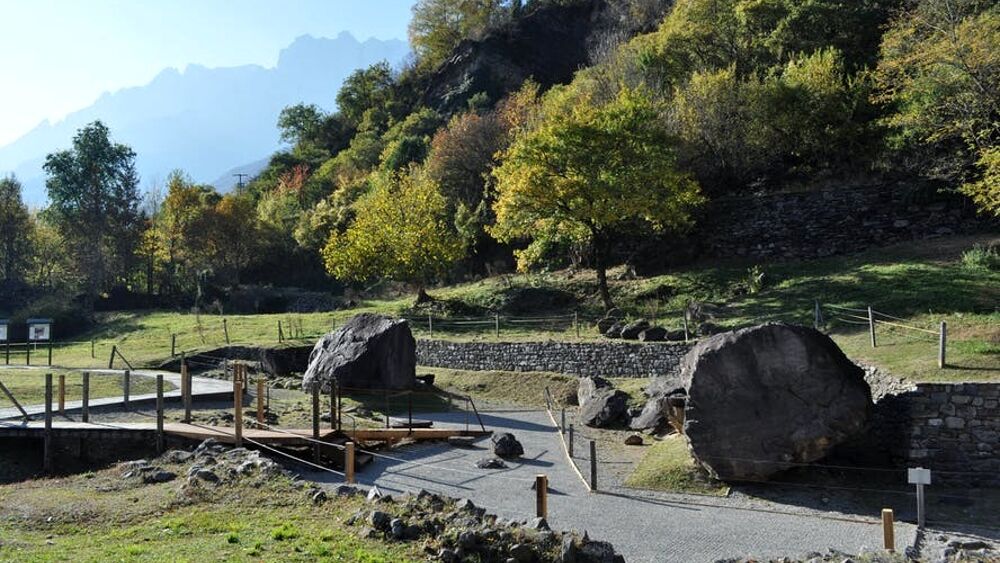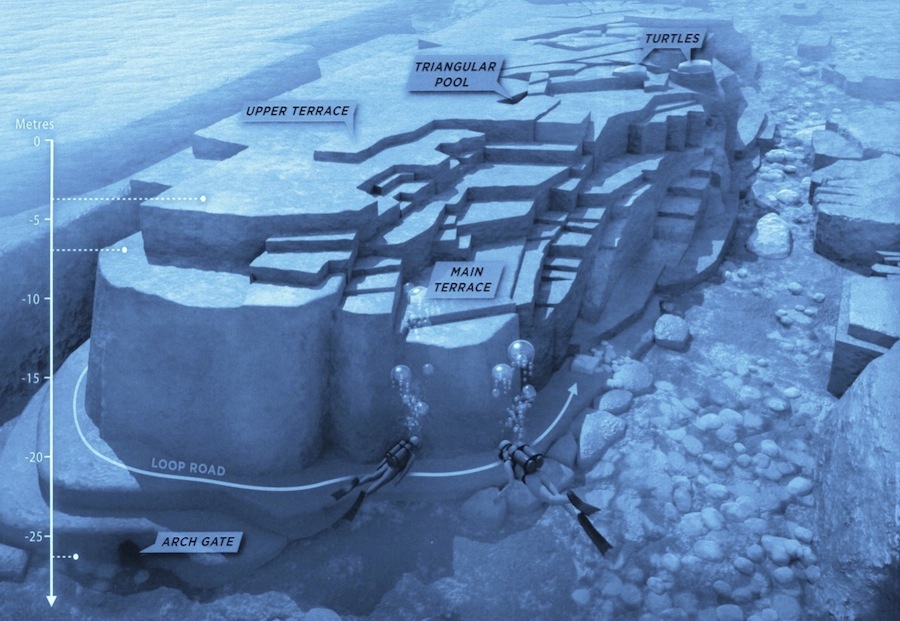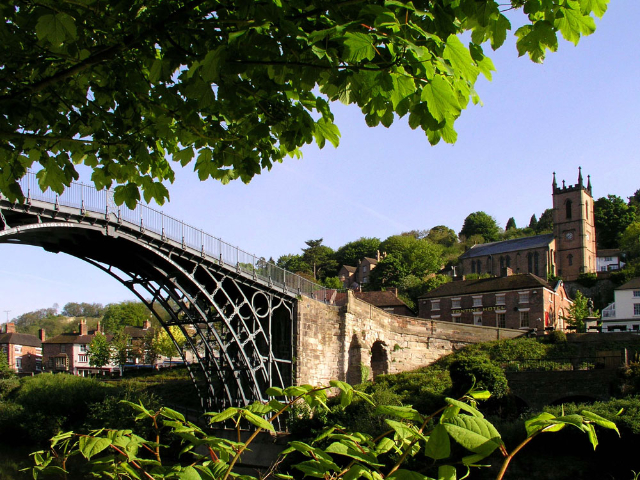Legend has it that…there was once a very poor mason who owned two donkeys, which he needed to carry on his business. One day, while he was busy digging the foundation of a house, he found a treasure. The mason decided not to reveal his discovery to anyone, for fear that they would take his money away. Therefore he continued to live always as a poor man.
One day the mason’s son fell in love with the daughter of the Commander of the Square, who did not want to give his daughter in marriage to such a poor man. Therefore she decided to propose a kind of challenge to make him desist from his intent. She would allow him to marry her daughter if he could build a tower that would surpass all the others in the city in height.
The mason’s son, thanks to the treasure his father had found, succeeded in building the tower and thus was able to marry the beloved maiden.
The Asinelli Tower was erected in 1119 by Gherardo Asinelli, a nobleman of the Ghibelline faction; it is 97.20 meters high, inside it has a staircase consisting of 498 steps, it hangs 2.32 meters to the west.
Corridoio Visconteo In the 12th century the municipality bought it from its owners to use it for military purposes, as a prison and support for the cages in which condemned prisoners were locked up for pillory.
In the second half of the 14th century, during the decade of Visconti rule, the tower was converted into a fortress. A wooden construction was built around the tower, set thirty meters above the ground and joined to the adjoining Garisenda by an aerial passage from which it was possible to dominate the city and the "Mercato di Mezzo," a commercial center and possible focus of riots. This wooden framework was destroyed by fire in 1398.
In 1448 (according to others in 1403), a crenellated masonry stronghold equipped with porticoes was built at the base to replace pre-existing wooden structures that was first used as a prison and then as housing for soldiers on guard duty
Today, the arches of the rocchetta’s portico have been enclosed with storefronts to house a number of artisans’ stores as a reminder of the medieval "Middle Market’s" function as a commercial center. I remember that in the early post-war period, there was a furniture store at the same place, which was closed so that the tower could be restored to its original appearance with a viable portico. Opinions that change over time! What did the fortress actually look like?
There are several curious episodes that the chronicles of Bologna tell us about the tower. In 1513, during some festivities, an eight-pound cannonball, fired cheerfully from Porta Maggiore, struck the tower without fortunately causing serious damage. The greatest offenses to the ancient structures were caused by lightning, in fact only in 1824 the building was equipped with a lightning rod, until then protection from atmospheric events was entrusted to Saint Michael the Archangel depicted in a bas-relief.
How towers were built:
Eight centuries ago the construction of a tower took three to ten years. The base section usually did not exceed ten meters while other dimensions were determined by height. At that time, no actual design was carried out as we understand it now, but simple instructions were drawn up that were easily understood by both principals and performers.
Curious and ancient was the system used to draw the perimeter for the excavation on the ground:
the master builder had three strings with knots placed at multiples of three, four and five, e.g. 15, 20 and 25 feet (a Bolognese foot corresponds to 38.0098 cm); these strings, placed on the ground, form a right-angled triangle and then, by moving them appropriately, a square.
Excavation was then carried out until a layer of clay solid enough to support the weight of the tower was reached, usually at a depth of about six meters, then the soil was compacted by inserting, with blows of a sledgehammer, oak logs about two meters long. Then the foundations were made with a mega mixture of lime, boulders, gravel and sand to a thickness of about 15 feet after which the base was made with well-squared selenite blocks stacked on top of each other.
Then the actual construction was begun with the technique of sack masonry, that is, two brick walls were erected, one much thicker inside and one outside, joined with ribs also made of brick, and the gaps were filled with a mixture of lime mortar, stones and sand.
Every 18 to 20 coats of bricks, three or four holes were left in the wall, which served as anchors for the scaffolding needed to continue the work (said holes still exist).
As one went up the inner wall was thinned both to lighten the structure and to create the footholds for the various floors, in addition the useful interior space increased. The last section was made of bricks only.
